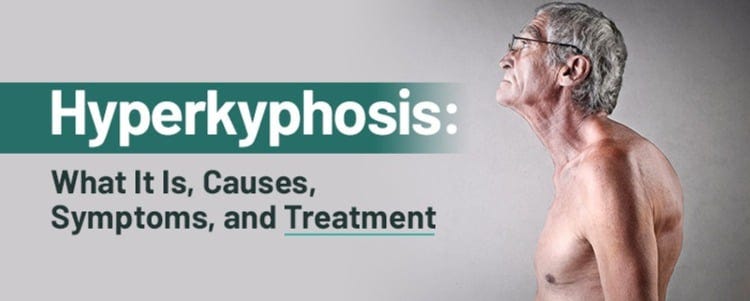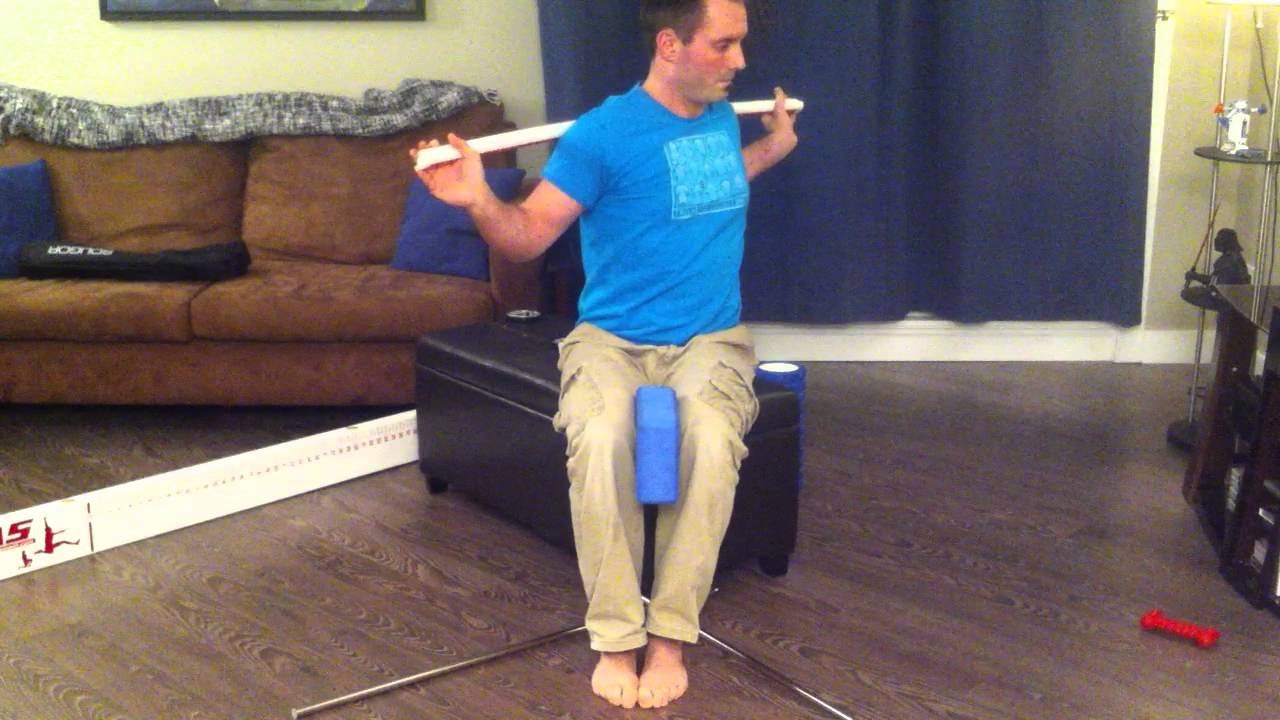
All clients require program design predicated upon sound research, thorough assessments, and scrupulous attention to detail. In my business, clients exhibiting early or late stages of hyperkyphosis act as an excellent example in applying these aforementioned principles. I would like to briefly review hyperkyphosis, explore its clinical implications, and provide evaluative strategies implemented from my work as a kinesiologist.

Hyperkyphosis can be described as an exaggerated anterior curvature of the thoracic spine, with a kyphotic angle greater than 40 degrees (Katzman, Wanek, Shepherd, & Sellmeyer, 2010). With age, kyphotic curvature of the thoracic spine increases, often compromising an individual’s performance and quality of life in daily tasks.
Katzman et al. (2010) have noted that particular clinical consequences exist such as difficulty rising from a chair due to changes in center of mass, reduced vital capacity, and difficulty reaching overhead. Physiologically, due to increased thoracic curvature of the spine, muscles traversing this region become lengthened, thusly altering their length-tension relationships (Kenney, Wilmore, & Costill, 2012).
In essence, force generation of the back musculature becomes compromised. Biomechanically, increased kyphotic angles drive the anterior aspects of vertebral bodies closer. This places increased pressure along the intervertebral discs in a posterior direction. In time, and with enough flexion cycles, this may cause a posterior bulge and/or herniation of the intervertebral discs (McGill, 2007). Having considered clinical implications, how then, might exercise professionals intervene?

Detection of kyphotic changes would be a logical and prudent first step. Although Katzman et al. (2010) provide tools such as a Debrunner kyphometer and a Flexicurve ruler, other modalities may also prove to be efficacious. I submit that examining seated thoracic spine rotation might be a quick method of evaluation.
Generally, thoracic spine axial rotation can be as high as 54 degrees in left and right directions, and I look for 45 degrees or more (Strom-Olsen, 2013). The assessment is performed by having the client sit erect with the knees tightly adducted. A dowel is placed behind the client’s head, spanning from one shoulder to another.
Next, the client is asked to turn to the right, then to the left for a maximum of three repetitions per side. If they score at or below 45 degrees, thoracic spine mobilization drills are implemented as a corrective strategy. Please see the following link for a video outlining the setup of this evaluation: Thoracic Mobility Assessment. Subsequent posts will outline corrective strategies that I implement in my practice.
Hyperkyphosis carries with it, complications that not only hinders performance; it also affects more basic and fundamental tasks in daily living such as reaching, standing and breathing. Early detection and intervention may help circumvent, or at minimum, slow the degenerative processes that later stage hyperkyphosis may induce.
References
Katzman, W. B., Wanek, L., Shepherd, J. A., & Sellmeyer, D. E. (2010). Age-related hyperkyphosis: Its causes, consequences, and management.Journal of Orthopaedic & Sports Medicine. 40 (6), 352-360.
Kenney, W. L., Wilmore, J. H., & Costill, D. L. (2012). Physiology of sport and exercise (5th ed.). Champaign, IL: Human Kinetics.
McGill, S. (2007). Low back disorders: Evidence-based prevention and rehabilitation(2nd ed.). Windsor, ON: Human Kinetics.
Strom-Olsen, H. (2013). Functional anatomy of the back and spine. Part 3: Thoracic region.[Slideshow Presentation]. Retrieved from https://mycourses9.atsu.edu/bbcswebdav/pid-327269-dt-content-rid-7085608_1/courses/13-14WI-ONL-HM502-2-ASHS/Cervical%20and%20thoracic%20spine/Module%201%20-%20Presentation%20Back%20%26%20Spine%20-Thoracic%20region.pdf
-Michael McIsaac
